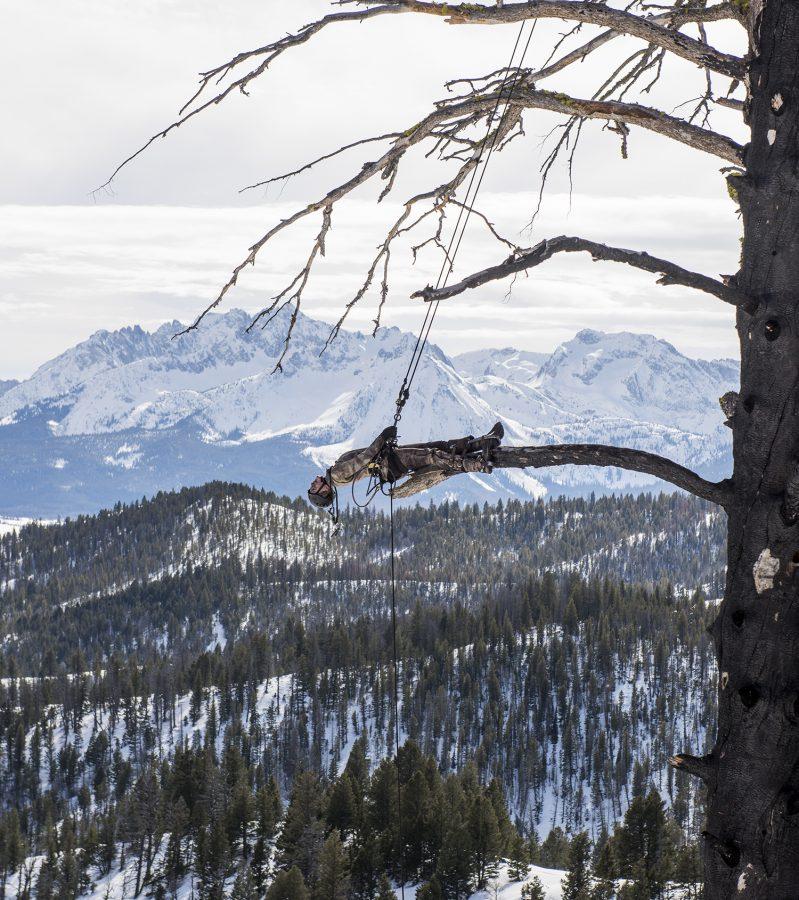“REDOUBT” is a film tragically mired in its own artistry. It is a visually breathtaking work of art so different and obscure that it can barely be considered cinema. In fact, it should not be watched by anyone looking to see a movie for entertainment. There is nothing here in the way of narrative, characters or anything one might associate with cinema — it is truly avant-garde.
“REDOUBT” is written and directed by renowned contemporary artist Matthew Barney, who also plays one of the film’s six characters. Set in the Sawtooth Mountains of Idaho, it is a loose, modern-day retelling of the myth of Diana and Actaeon, in which the latter, a mortal hunter, discovers the former, the goddess of the hunt, bathing. He is turned into a deer as punishment and hunted by his own dogs. Its 134-minute runtime is divided among six “hunts” in which Diana (Anette Wachter) and her two female companions stalk wolves and other animals while engaging in slow, somewhat bizarre choreography. With each hunt, they come closer to confrontation with Barney’s nameless character, an artist who seeks to capture the wilderness through electroplating, a medium wherein electrical currents are used to bond different metals.
Most of Barney’s films, “REDOUBT” included, serve as the centerpiece to a larger collection of works in other media, and this is how they are meant to be enjoyed. As a standalone piece of cinema, “REDOUBT” comes across as overly pretentious and deficient in the fundamental qualities of a narrative form of expression.
The film has absolutely no spoken dialogue, unless we count an unintelligible radio softly playing in the background of a single scene. It is not a silent film, but it is 100% dialogue-free, opting to rely on visuals. The vast majority of the film consists of the female hunters stalking prey — achieved with special effects and trained animals — and Barney’s character working on electroplating, either in the wilderness or in the trailer he (presumably) shares with his partner.
“REDOUBT” does not follow any manner of narrative structure or arc; almost everything at the end is the same as the beginning. It can hardly even be considered a story. It is, to the exclusion of other, perhaps more entertaining qualities, a piece of visual art, as if Barney meant to take a series of photographs but forgot that the camera was in video mode. “REDOUBT” knows exactly what it wants to be and is perfectly content with that.
To review “REDOUBT” as a film seems almost pointless; it doesn’t want to be cinema, it wants to be exactly what it is, and it has no qualms about putting all but a select few art-lovers to sleep.
As far as art for art’s sake goes, “REDOUBT” is a resounding success. Fans of Barney’s work or those interested in experiencing avant-garde, contemporary filmmaking will adore this film in all its careful, well-composed cinematography and thoughtful design. Those interested in watching a movie, however, should probably stay away.
Email Nicholas Pabon at [email protected].























































































































































